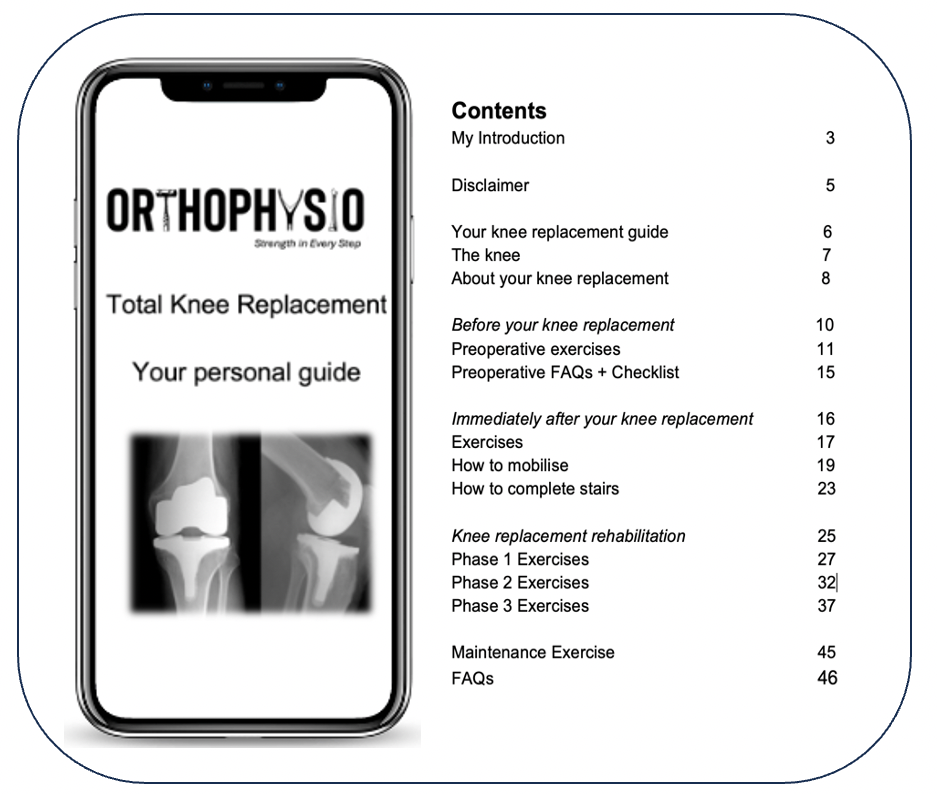When Can You Get Back to Driving After a Hip or Knee Replacement?
Recovering from a hip or knee replacement can be a challenging journey and many patients wonder when they’ll be able to drive again. Regaining independence is important, but safety must come first. Here’s a comprehensive blog on when you might be ready to return to driving.
1. Clearance from Your Surgical Team
Before getting back behind the wheel, it’s essential to receive approval from your surgeon or physiotherapist. They’ll assess your range of motion, strength and ability to perform essential driving tasks safely.
2. Ability to Perform an Emergency Stop
One of the key tests for driving readiness is being able to perform an emergency stop. This means having enough strength, mobility, and reaction time in your operated leg to press the brake pedal firmly and quickly.
3. Free Movement of Car Controls
You should be able to control the accelerator, brake, and clutch (if applicable) without pain or restriction. This requires good range of motion, coordination and muscle strength.
4. Comfortably Looking Over Your Shoulder
Being able to check blind spots and reverse safely requires the ability to twist your torso and neck comfortably. If this movement is painful or limited, driving could be dangerous.
5. Safe Entry and Exit from the Car
Practice getting in and out of the car smoothly and safely. If you struggle with this, it’s a sign that your mobility isn’t yet at a safe level for driving.
6. Free from Sedative Effects of Painkillers
Some pain medications, especially opioids, can impair alertness and reaction times. Ensure you’re no longer reliant on sedating medications before driving.
7. Considerations for Automatic Cars
If you’ve had your left hip or knee replaced, driving an automatic car can make returning to the road easier. Since there’s no need to operate a clutch, it reduces strain on your left leg.
8. Insurance and Legal Considerations
Check with your car insurance provider to ensure you’re covered to drive after surgery. In some countries, driving against medical advice could invalidate your insurance policy.
9. Adjusting Your Driving Environment
Ensure your car seat is positioned correctly to avoid strain while driving. Use a seat cushion if needed and adjust mirrors for better visibility. Consider adaptive car devices if mobility remains limited.
10. Reminder: Take Your Crutches
If you still use crutches to walk short distances, remember to bring them when driving. They’ll help you get in and out of the car and navigate when you’re away from home, especially in wet weather or walking on uneven surfaces. Want more answers to questions like these? Check out the contents page of our knee replacement guide
Additional Recovery Tips for Driving Success
Start with Short Trips: Begin with short, familiar routes before attempting longer journeys.
Drive During Low-Traffic Hours: Avoid busy times to reduce stress and enhance safety.
Use a Supportive Cushion: Consider using a supportive cushion or seat adjuster to improve comfort during driving.
Take Breaks on Long Journeys: If you need to travel long distances, schedule regular breaks to stretch and move around.
Ask for a Driving Assessment: Consider a driving assessment from a mobility specialist if you're uncertain about your ability.
Just had a hip replacement?
Join hundreds of patients who have got our free hip replacement guide that gives our clients a glimpse of our full guide and unleash your true potential after your hip replacement.
Explore More Recovery Blogs:
5 Key Steps to Successfully Recover from a Hip or Knee Replacement – Essential tips for a smooth recovery process.
How Long Does a Hip or Knee Replacement Last and How to Maximise Their Lifespan? – Insight into long-term joint health.
How to Mobilise After Your Knee or Hip Replacement? – Step-by-step guidance on safe mobilisation.
How to Complete Stairs Safely After a Hip or Knee Replacement? – Tips for mastering stairs post-surgery.
From Surgery to Strength: How to Return to Normal Life After a Hip or Knee Replacement? – A comprehensive recovery roadmap.
How Long Should You Exercise After a Hip or Knee Replacement—for Life? – Long-term fitness strategies for joint health.
Final Thoughts
Returning to driving after a hip or knee replacement varies from person to person. Always follow the advice of your healthcare team and avoid rushing the process. Ensuring you’re physically capable, pain-free, and alert will help keep you and others safe on the road.




